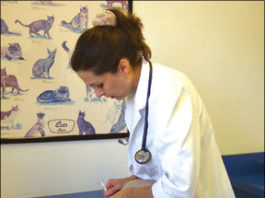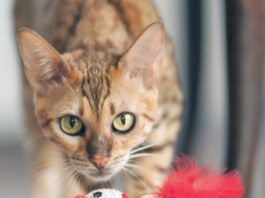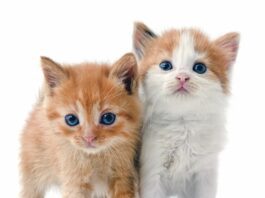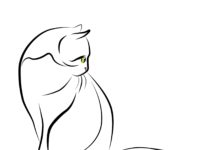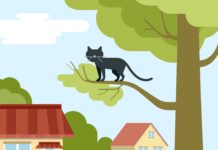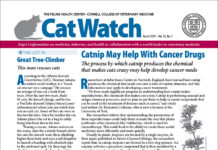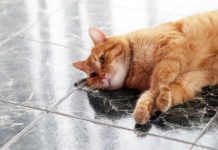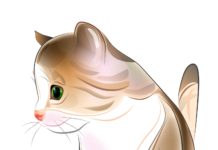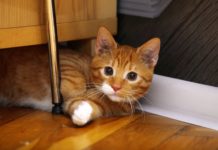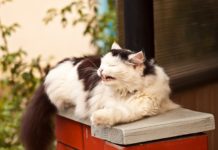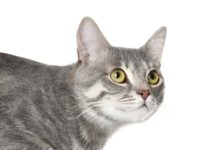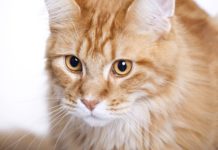Why Do Cats Eat Grass?
Benjamin L. Hart, DVM, PhD, at the School of Veterinary Medicine at the University of California at Davis, conducted a series of surveys with dog owners on grass-eating behaviors and published an article in the December 2008 Veterinary Medicine. He found that most dogs do not show signs of illness before eating grass and that only 22 percent vomited afterward. As for cats, Dr. Hart said that, Cats typically do not appear to be ill before eating plants nor do they regularly vomit afterward.
Cant Wait for an Ask Elizabeth Reply?
Our Elizabeth loves answering reader questions in her column every month, but she wants to be sure you know that Cornells Camuti Consultation Service also can help you out. The service puts you in contact with a Cornell veterinary consultant who will discuss your cats condition and/or care with you.
Implement a Simple, Safe Feline Diet
SmartBrief tells us that Overweight, sedentary cats will lose weight if the size of their daily meals is gradually reduced, according to research published in the American Journal of Veterinary Research, and although there was no statistically significant change in activity, its possible some cats will become more active as the weight comes off. The report says, The researchers reduced the cats food consumption by 20 percent initially, then continued with regular reductions, and the cats in the study lost weight and experienced changes in their gastrointestinal bacteria.
Great Tree-Climber
According to the Atlanta Journal-Constitution (AJC), Normer Adams, a retired social worker, is a treed-cat rescuer on a rampage. He rescues an average of one cat a week from trees. Over the last two years, thats 91 cats. He doesnt charge, and he has a YouTube channel (https://tinyurl.com/cattreerescue) where you can watch him rescue each cat. Some of the cats were in the tree for days. Once he reaches the cat, Adams places the cat in a bag to safely bring him back down the tree.
Download the Full March 2019 Issue PDF
Download the Full March 2019 Issue PDF…
Feline Pancreatitis May Be Chronic
When pet owners think of pancreatitis, often the image that comes to mind is a dog who does a garbage raid and consumes a bunch of spoiled or fatty food. Dietary indiscretion usually is not considered a cause of pancreatitis in cats, perhaps because cats are more fastidious in their eating habits!
Tooth Resorption
Tooth resorption, still sometimes referred to as feline odontoclastic resorptive lesions or FORLs, is a common and painful condition affecting cats teeth. In cats with this condition, one or more teeth slowly break down and resorb, exposing the pulp of the tooth. Estimates of how many cats are affected by tooth resorption range from 20 to 60 percent.
FDA Approves Revolution Plus
The U.S. Food and Drug Administration (FDA) has approved Revolution Plus (selamectin and sarolaner topical solution), a new combination topical product that provides protection against fleas, ticks, ear mites, roundworms, hookworms, and heartworms for cats and kittens as young as eight weeks of age and weighing 2.8 pounds or greater. Revolution Plus combines the proven broad-spectrum protection of selamectin (found in Revolution) with the advanced flea- and tick-killing power of sarolaner.
Soothing the Savage Beast
Many family cats show signs of stress at some point. It may be a short-term stress, which is a swiftly passing stage that may occur after a move or the addition of a new pet. But some cats show long-term stress. Stress may manifest itself as urinary marking, aggression toward people or other pets, scratching inappropriate things like furniture, or overzealous grooming leading to hair loss and possible skin lesions. Some physical ailments, such as idiopathic cystitis and chronic gastrointestinal problems, can also be stress-related.
Good-Bye Severe Sinus Problems
Despite the disturbing definition that will first appear if you do an internet search for rhinotomy (mutilation or amputation of the nose), this procedure can be beneficial to cats experiencing chronic nasal problems. There are two primary surgical techniques: dorsal rhinotomy and ventral rhinotomy. In both cases, the surgeon removes part of the bone surrounding the cats sinuses in order to gain access to the sinus and remove the source of the problem, be it a foreign body, a tumor, or infected tissues.
Five Things to Know About Supplements
Colorful advertisements boasting enticing benefits may compel us to purchase nutritional supplements for our cat. After all, we all want whats best for our kitty. But if youre feeding a quality cat food, youre likely all set. Good cat food manufacturers hire veterinary nutritionists who follow guidelines from the Association of American Feed Control Officials (AAFCO) to ensure that the foods are nutritionally complete and balanced. You shouldnt need to purchase a supplement unless your cat has a specific problem.
Why So Many Tests for FeLV?
I recently took my 10-year-old Maine Coon indoor/outdoor cat to the veterinarian and had him tested for feline leukemia (FeLV). The initial test (ELISA) came back positive, and the follow-up test (IFA) came back negative. My veterinarian recommends retesting in 60 days or using PCR test, but Im worried about my cat and confused about these tests and what they are telling us. Can you shed some light on this issue?


